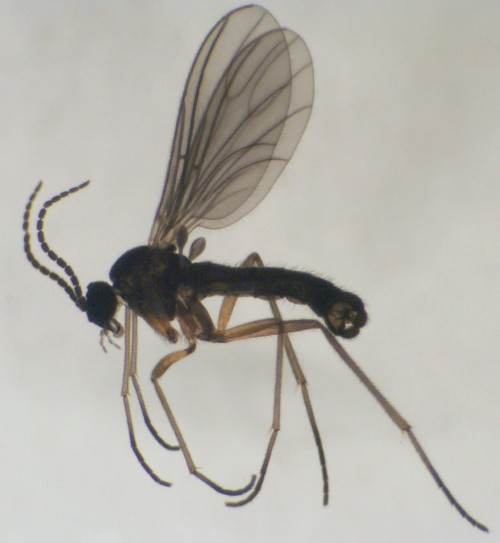Fungus Gnats
 Scientific Name
Scientific Name
Bradysia and Sciara
Hosts
In potting soils and mixes of many houseplants.
Symptoms
Damage is caused by the larvae. They feed on any organic matter as well as attacking bulbs, roots and other fleshy organs. Delicate seedlings of many plant species can be killed with plants yellowing and often wilting rapidly before death. Look for the larvae, particularly in the upper inch of media in the container. Fungus gnats have been shown to transmit diseases economically serious to the greenhouse industry. The gnats (flying adults) can be a nuisance for homeowners even thought they do not cause damage to plants.
Life Cycle
These insects reside on the soil but will fly about when pots are moved or when watering occurs. The adult has about a 10 day lifespan but during that period may lay in excess of 250-300 eggs. The life cycle begins with the egg hatching in five to six days into a larva. Larvae feed for 10 to 14 days and then change into pupae in the soil. After five to six days an adult emerges from the pupa with the life cycle completed within four weeks.
Description
Fungus gnats are fragile dark gray to black-colored flies with long legs and antennae. The adult is about 1/8-inch long with one pair of transparent wings. The larvae are extremely tiny "worms" that when observed in the soil or roots may be translucent with an obvious dark gut.
Control
Please contact your local county extension office.
